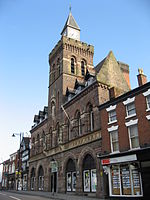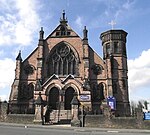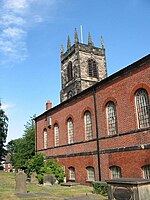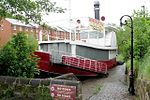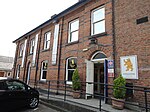Astbury Mere
CongletonCountry parks in CheshireLakes and reservoirs of CheshireParks and open spaces in Cheshire

Astbury Mere is a lake and open area in West Heath, a suburb of Congleton, Cheshire, England, in an area formerly quarried for silica sand. Part of the area is accredited by Natural England as a country park, Astbury Mere Country Park. The country park has an area of 14 hectares (35 acres) and the lake covers 43 acres (17 ha). The park is owned by Astbury Mere Trust, and the lake and its banks by Stoke-on-Trent Angling Society.
Excerpt from the Wikipedia article Astbury Mere (License: CC BY-SA 3.0, Authors, Images).Astbury Mere
Explorer Trail,
Geographical coordinates (GPS) Address Nearby Places Show on map
Geographical coordinates (GPS)
| Latitude | Longitude |
|---|---|
| N 53.158888888889 ° | E -2.2294444444444 ° |
Address
Explorer Trail
Explorer Trail
CW12 4FR , West Heath
England, United Kingdom
Open on Google Maps



